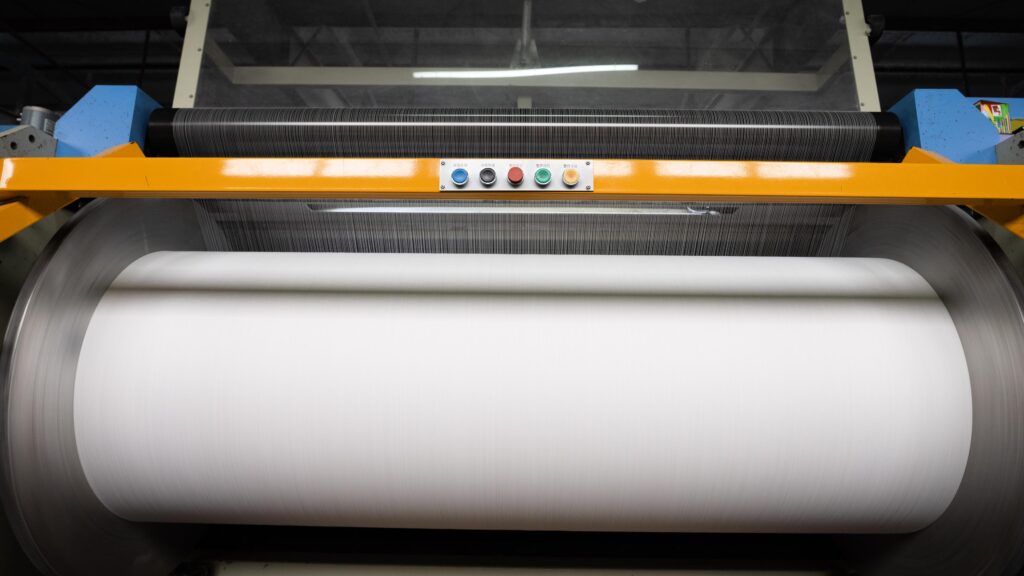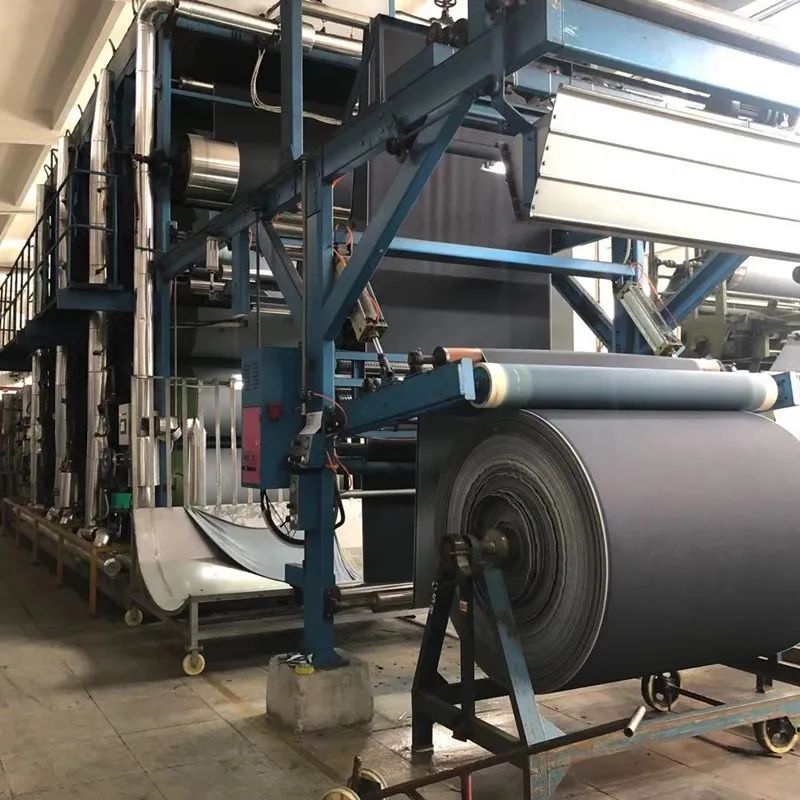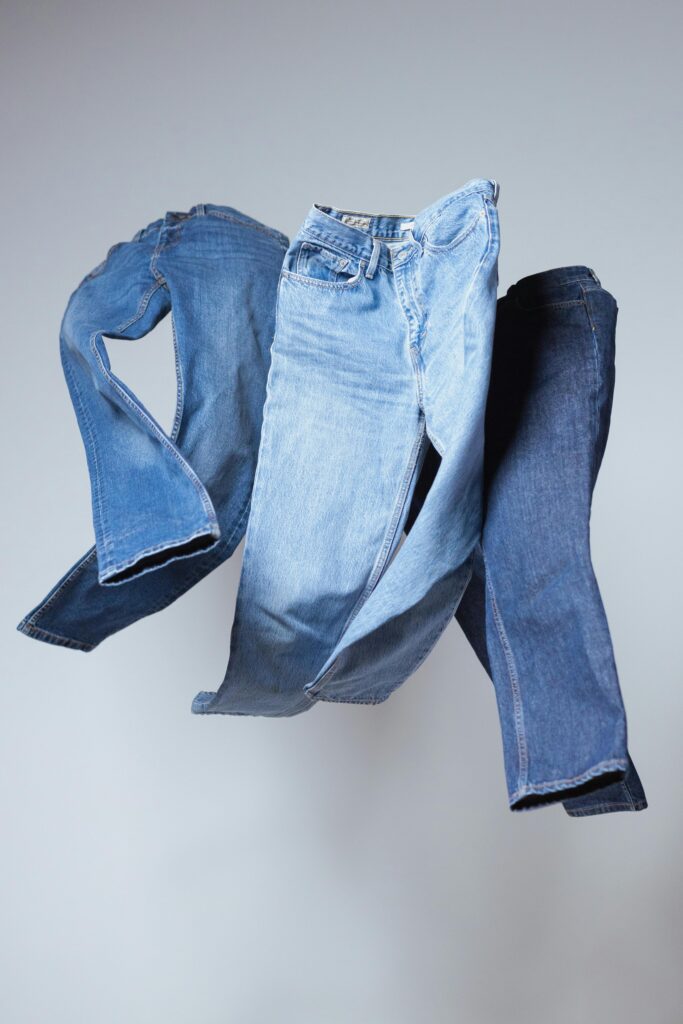डेनिम कपड़े की निर्माण प्रक्रिया: कच्चे माल से लेकर तैयार उत्पाद तक

अनुमानित पढ़ने का समय: ~5 मिनट
परिचय डेनिम फैब्रिक उत्पादन
डेनिम कपड़े का उत्पादन दुनिया के सबसे प्रतिष्ठित वस्त्रों में से एक, जो अपने शिल्प के लिए प्रसिद्ध है टिकाऊपन, आराम और कालातीत आकर्षण। मज़बूत वर्कवियर से लेकर हाई-फ़ैशन के ज़रूरी कपड़ों तक, डेनिम का अनोखा आकर्षण उस सूक्ष्म प्रक्रिया से उपजता है जो कच्चे सूती कपड़े को स्टाइलिश कपड़ों में बदल देती है। यह गाइड डेनिम के पाँच प्रमुख चरणों की पड़ताल करती है। डेनिम कपड़े का उत्पादन—कपास का चयन, कताई और रंगाई, बुनाई, पोस्ट-ट्रीटमेंट और फ़िनिशिंग—यह दर्शाता है कि प्रत्येक चरण डेनिम की स्थायी विरासत में कैसे योगदान देता है। चाहे आप डिज़ाइनर हों या उत्साही, इस प्रक्रिया को समझने से डेनिम की बहुमुखी प्रतिभा के पीछे के रहस्य खुल जाते हैं।
कच्चे माल का चयन
उच्च गुणवत्ता वाले कपास का चयन
की नींव डेनिम कपड़े का उत्पादन चयन में निहित है उच्च गुणवत्ता वाले कपास. लंबे रेशे वाला कपास इसे इसके लंबे रेशों के लिए पसंद किया जाता है, जो एक चिकनी, सघन बुनाई बनाते हैं, जिससे कपड़े का एहसास बढ़ता है और टिकाऊपन। के अनुसार LYDenim की फ़ैब्रिक गाइडप्रीमियम कॉटन बेहतरीन मज़बूती और आराम सुनिश्चित करता है। कई ब्रांड कार्बनिक कपास पर्यावरणीय प्रभाव को कम करने के लिए, गुणवत्ता बनाए रखते हुए टिकाऊ प्रथाओं के साथ संरेखित करना।

कपास

धागा
कताई और रंगाई
इंडिगो डेनिम बनाना
रंगाई की प्रक्रिया डेनिम के प्रतिष्ठित रूप को परिभाषित करती है। नील रंगाई डेनिम को उसका विशिष्ट नीला रंग देता है, जो बुने हुए कपड़े के बजाय धागों को रंगने से प्राप्त होता है। सूती रेशों को कातकर बनाया जाता है धागाफिर नील स्नान में डुबोया जाता है। जैसा कि इस विधि में बताया गया है, LYDenim की बुनाई गाइड, हल्के अंदरूनी रेशों के साथ एक गहरी सतह बनाता है, जिससे समय के साथ प्राकृतिक रूप से रंग फीका पड़ जाता है। इसका परिणाम डेनिम की विशिष्ट गहराई और बहुमुखी प्रतिभा है, जो अनोखे, पहने हुए सौंदर्यबोध के लिए एकदम सही है।

रंगाई की तैयारी

डाइंग
बुनाई
क्लासिक ट्विल संरचना
डेनिम की विशिष्ट बनावट इसकी टवील बुनाई, जहाँ कम ताना (ऊर्ध्वाधर) धागे अधिक बाना (क्षैतिज) धागों के साथ जुड़कर विकर्ण रेखाएँ बनाते हैं। इस संरचना का विवरण LYDenim की बुनाई गाइड, बढ़ाता है टिकाऊपन और लचीलापन डेनिम को उसकी पहचान योग्य उपस्थिति देते हुए। 3/1 टवील यह मानक है, जो मजबूती और ड्रेप को संतुलित करता है, जिससे यह जींस और जैकेट के लिए आदर्श बन जाता है।

बुनाई
उपचार के बाद
नरम करना और स्टाइल करना
बुनाई के बाद, डेनिम उपचार के बाद अपनी इच्छित अनुभूति और रूप-रंग प्राप्त करने के लिए। कपड़े धोनेब्रश करने और ब्लीच करने से कपड़ा नरम हो जाता है और निखार आता है पसीना सोखने वाला गुण. पत्थर धोना तकनीक, में वर्णित LYDenim की सिकुड़न गाइड, प्यूमिस स्टोन का इस्तेमाल करके प्राकृतिक रूप से फीका, विंटेज लुक तैयार करते हैं, जिससे आराम और स्टाइल बढ़ता है। ये ट्रीटमेंट खुरदुरे डेनिम को मुलायम और पहनने लायक कपड़े में बदल देते हैं।

उपचार के बाद
परिष्करण
डेनिम परिधानों का निर्माण
का अंतिम चरण डेनिम कपड़े का उत्पादन शामिल परिधान परिष्करणडिजाइनर डेनिम को काटते और सिलते हैं जींसजैकेट, स्कर्ट वगैरह में रिवेट्स या सिलाई जैसे बारीक विवरण शामिल करके फैशन के रुझानों के अनुरूप डिज़ाइन तैयार किया गया है। यह कदम शिल्प कौशल को रचनात्मकता के साथ जोड़ता है, जिससे यह सुनिश्चित होता है कि डेनिम स्टाइल और कार्यक्षमता, दोनों के मामले में उपभोक्ताओं की पसंद के अनुरूप हो, जैसा कि लेख में बताया गया है। LYDenim की फ़ैब्रिक गाइड.

गारमेंट्स
निष्कर्ष
डेनिम कपड़े का उत्पादन यह परंपरा और नवीनता का मिश्रण है, जो परिवर्तनकारी है उच्च गुणवत्ता वाले कपास एक बहुमुखी, टिकाऊ वस्त्र में। नील रंगाई को टवील बुनाई और पत्थर धोनाहर कदम डेनिम के विशिष्ट आकर्षण को गढ़ता है। इस प्रक्रिया को समझने से डिज़ाइनर और उपभोक्ता डेनिम के शाश्वत आकर्षण की सराहना कर पाते हैं। अधिक जानकारी के लिए, डेनिम केयर टिप्स या टेक्सटाइल डिज़ाइन गाइड पर हमारे गाइड देखें।
LYDENIM द्वारा अनुकूलन सेवाएँ
🎨 चाहते हैं कस्टम डेनिम कपड़े या अद्वितीय कस्टम डेनिम परिधान? LYDENIM आपकी डिजाइन और उत्पादन आवश्यकताओं को पूरा करने के लिए दर्जी समाधान में माहिर है।
🛍️ अन्वेषण करें और प्रेरित हों: हमारे कपड़े चयन ब्राउज़ करें और डिजाइन विचारों की खोज करें LYडेनिम.
🌐 लोचदार कपड़े: हमारी पेशकशें देखें मायअलीबाबा. 📩 हमसे संपर्क करें: संपर्क करें malone@lydenim.com.
LYDENIM के साथ अपनी डेनिम कृति बनाएं—आपके विश्वसनीय साथी खिंचाव वाला कपड़ा और कस्टम डेनिम समाधान.
